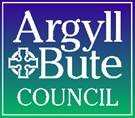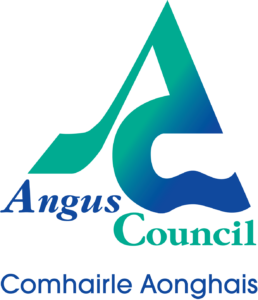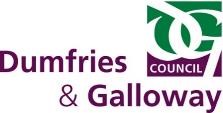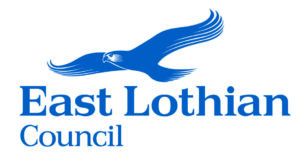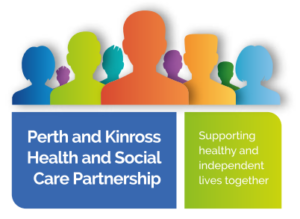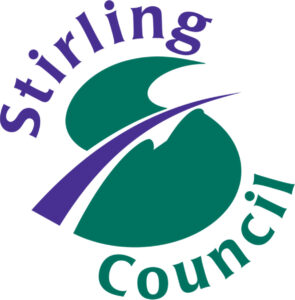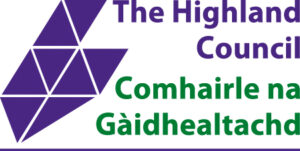Social Work Scotland response to the Scottish Government Review of Local Authority Financial Returns – Social Work Services (LFR03)
23 August 2020
General comments
Social Work Scotland welcomes the opportunity to comment on the proposed changes to the LRF3 for 2019-10. We sympathise with the position of Councils (and the Scottish Government) which have less staff time available for statistical returns, due to the pressures of dealing with Covid19.
Nevertheless, the proposed radical reduction in the data collected for social work and care services via the LFR3 will make the financial statistics much less useful to users and significantly reduces the information in the public domain about a large volume of public expenditure amounting to £4.5 billion (gross) in 2018-19.
In its UK role, ONS last year reviewed the Adult Social Care dataset in Scotland and found important gaps; unfortunately, their review did not include financial information, however, their findings do not seem consistent with the LFR3 direction of travel, especially if the data reductions were to become permanent.
Unfortunately, the brief “summary of changes” document issued with the consultation does not identify which changes are intended to be temporary, and which changes are due to “information already gathered as part of the LFR03 review” and might therefore be permanent. The LFR3 review is described as not yet completed as a result of reduced capacity due to Covid-19. Social Work Scotland is not aware of consultation with service users on any prior proposals from the review. We were involved in an earlier review three or four years ago which stalled – is this the same one? We would welcome involvement in the review when it is re-starts.
In our view, permanent changes of this magnitude require very careful consideration and a fuller consultation than can be done in present circumstances. Meanwhile, we strongly urge all changes to the 2019-20 LFR3 to be temporary until the review can be reconvened with data user representation, and a fuller consultation paper prepared.
We understand the desirability of a temporary change to reduce the workload this year, and possibly next if there is no vaccine or widespread vaccination by then; and we appreciate the need to simplify the recording of transactions between councils, IJBs, and health boards. However, we have concerns about the statements that “these changes are focussed on reducing the volume of data collected to that which is required for a clear and specific purpose”, particularly in the “additional information section” where the only examples given of recognised data needs are “figures that are required for ONS and Eurostat data collections or are used within the Local Government Benchmarking Framework”. (Later we query whether the ONS requirement has been met).
However, there are other essential uses for the data which are not routine, involving the policy divisions of the Scottish Government, MSPs, COSLA, other stakeholders such as the Third Sector and Social Work Scotland; “think tanks”, research institutes and academics; and campaigning groups. Examples of such uses of LFR3 data known to Social Work Scotland include costings for policy initiatives such as free personal care and changes to charging policy; work on the financial memoranda for new legislation (integration, children services, carers); post-implementation work on costs and the adequacy of funding (eg FPC, Children, Carers); campaigns by groups opposed to charging for social care; calibration of indictors for funding distributions; work on future expenditure requirements as a result of demographic change, for workforce planning and future funding options for social care.
In a democratic society, the purpose of financial statistics about public expenditure needs to be set more widely than the necessarily aggregated information needed for the national accounts and statutory reporting. The whole concept of “additional information” as something secondary to this narrow focus is itself unhelpful.
Treatment of transactions with IJB and NHS
This is an important area that we have not yet worked through in terms of the current LFRs and the proposed changes to LFR00 and LFR3.
One issue which does not appear to have been addressed is the lack of service expenditure data for adult social care client groups in the LFR3 returns from Highland for the last few years. This has been a problem since Highland adopted the “single agency” approach to Health and Social Care integration, whereby Highland Council delegated its legal duties and powers in relation to adult social care to NHS Highland, and NHS Highland delegated certain legal duties and powers in relation to children’s services to Highland Council. This has been interpreted as meaning that most adult social care services are no longer part of the local authority’s financial return, albeit that the ultimate legal responsibility for these services still lies with the delegating authority, Highland Council.
Certainly, in the first part of this period, NHS Highland provided civil servants with an annual LFR3 showing the service expenditures for Adult Social Care, to allow the full Scottish totals for service spends to be calculated as when they were needed. I do not know if this helpful practice has continued. However, these were never incorporated in the official LG statistics which simply did not include adult social care service expenditure in Highland. Unfortunately, not all users of the LFR3 statistics are likely to be aware of this problem if they are only using the Scottish totals.
Support services
We also have no comments on the changes to Support Services, other than to note that in the 2018-19 LFR3 returns it appears gross in row 9 at £150m, again gross in row 51 at £142m, and net in row 85 at £140m. The proposed removal from the service expenditure sections from 2018-19 seems sensible, but will reduce total service spend, so therefore needs to be added to a long list of changes that data-users need to know about time-series comparabilities.
Proposed aggregation of five Adult Social Care client group columns into one
We do not support the aggregation of the five adult client groups into one single category of Adult Social Care. This represents a huge loss of financial information and would mean data users seeking information on social work/care spend on older people, or people with learning disabilities, or physical disabilities, or mental health needs, would only have the gross (and not also net) spend totals (from the proposed new rows at 49-53), but no information at all on the expenditure on the different services funded, apart from the new lines for older people only for care homes and home care.
For example, local authorities spent well over half a billion pounds (£578m gross) in support to people with learning disabilities in 2018-19: the suspension or abolition of any detail about this spend on services below the total is unwarranted on materiality, equalities and policy grounds, and is not in the public interest. Similar remarks apply to support for people with physical disabilities (£268m gross in 2018-19), mental health needs (£187m), and other needs (£71m).
The LFR3 return has required a service/client-group split for at least 18 years. While local authorities need to use service statistics to split any generic categories in their financial ledgers which are not already split between the adult client groups, they all will have systems in place for doing that. They will need to use such systems to produce the five Adult Social Care client group sub-totals in rows 49-50. But how will they do that? In the existing LFR3, this is done by adding up the service spends for categories already coded to a particular client-group, to which are added the results of splitting generic categories of spend – the total gross (or net) spend for the client-group is, therefore, a result of adding together the service-specific data. So, if this work has to be done anyway, there is little time-saving in deleting most of the gross expenditure service rows from the LFR3.
Of course, there is another way of producing the client group totals in rows 49-53, which is to take the results from last year and apply them as proportions to the total Adult Social Care gross expenditure. Such a shortcut would save time but contradicts one of the stated aims: to improve data quality. In general, it is a mistake to think that data quality is improved by higher levels of aggregation, when aggregates are not available independently of adding sets of lower-level data; all that is achieved is that the data quality problems become harder to spot.
Children with disabilities (Memorandum item)
The “summary of changes” document simply states this column is to be removed, without giving the rationale. While children with disabilities are an important group, they have never been properly incorporated into the LFR3, only appearing as a memorandum item which made the data capture seem less important. In 2018-19 only 13 out of the 32 authorities reported any spending; the Scotland page in the workbook shows the gross expenditure of £11m, down from £24m in the previous year. However, there was an error in the calculation which omits Glasgow: the correct figure for Scotland for 2018-19 is £16,385m. However, that is clearly an undercount, since 19 councils made no returns.
The Carers Act, and associated funding, apply to carers of children and young people with disabilities, and (all other things being equal) could be expected to increase spending on services for being cared for in order to assist carers. However, it is clear that collecting spending data on children with disabilities has not worked on a memorandum basis, and that now is not the time to do the work to establish how reasonably robust financial data can be collected for this group. Since partial collection serves little purpose we agree with the deletion of this item.
Changes to service rows
The service rows have been significantly reduced, particularly for gross expenditure. However, the points made earlier suggest that the time-saving delivery will be less significant than it seems.
Turning briefly to the gross expenditure service rows that are retained, it seems anomalous to ask for Accommodation-Based Service totals only for Children and Families, but not for Adult Social Care. Accommodation-Based Services has a number of sub-categories, of which only Care Homes have been retained, this time for both Children & Families and Adult Social Care. There is a complete loss of information on gross (and net) spend on Residential Schools (£127m gross in 2018-19) and Secure Accommodation (£12.8m).
There are currently no net expenditure totals requested for the five Adult Social Care client groups (ie the net equivalent of rows 49-53). This will be a problem for many users of LFR3 data, including Social Work Scotland, and possibly also for the UK and Scottish public expenditure statistics. The Scottish tables including Personal Social Services in Chapter 10 of HM Treasury’s Public Expenditure Statistical Analyses 2020, published last month, must be derived from the LFR3 and appear to use net expenditure (since the PSS total for 2018-19 is £3.370 billion, which is similar to the LFR3 net total of £3.246 bn). PESA also requires separate figures for “Sickness and disability”, “Old age”, and “Family and children” – the latter figure is very close to the net LFR3 total, but PESA appears to count some expenditure for older people under “sickness and disability”. Nevertheless, if the ASC client-group split is not available for net expenditure on the five client groups, the OSCAR system which produces PESA will have to be fed estimates, not actuals.
In 2012 Social Work Scotland calculated the impact of demographic change on future expenditure needs for submission to the Scottish Parliament’s Finance Committee. LFR net expenditure data for older people was used with national activity data to estimate age-specific spending. We plan to update this work, but that would not be possible on the current LFR3 reduction proposals, without total net expenditure for older people to act as the control variable for the baseline. A similar methodology may have been used in the Scottish Government’s Health Social Care Medium Term Financial Framework (2018), which again will need updating before it expires in 2023. Improved methodologies require unit costs to weight service durations or events, separately for age/sex groups, from the social care person-based datasets developed initially by ASD and now by ISD. (Methodologies are needed to project future numbers of people with learning disabilities – the large increase in spending over the last 10-15 years has not received the same attention as the growth in the elderly populations). The cost numerators must largely come from the LFR3 if Scottish social care data is to be used. This requires maintaining the full Adult Social Care client group structure in the LFR3, and a reasonably detailed set of services.
Generally, fewer service rows have been cut from Net Expenditure than from Gross Expenditure, but there are some exceptions where the service appears under Gross but not under Net Expenditure, but no rationale is given in the text document on the changes. Should (Row 58) Fostering/Family placements be moved to Net? The same question arises for the three Self-Directed Support rows, which are in Gross (lines 42-44) but not in Net.
Row 44 is new: “SDS3 – Support arranged directly by the Council”. Option 3 of SDS is where people ask for their support to be arranged and managed for them by the Council. Services will then be provided directly by the Council or purchased by them. It is not clear why this row is necessary, since by definition the services provided or arranged will appear in other service rows. The 2018-19 LFR3 guidance makes it clear that the SDS2 row (now 43) is only to be used for any service spend under this option which is not already counted elsewhere in the LFR3. Is the new row 43 intended to capture similarly residual spend? It seems likely to be much smaller than other service categories which have been cut.
The Total “Accommodation-Based Services” is retained in Net Expenditure, but the problem created by the aggregation of the five ASC client-groups is addressed only for older people (row 71) and “people aged 18-64 with physical or sensory disabilities” (row 70). The former accounted for the largest accommodation spend in 2018-19 (£593m) and the latter for £57m, far less than for learning disabilities (£160m), which should also have a new row (unless you restore the full client-group columns).
As remarked earlier, care homes for children and young people are retained, but not Residential Schools (£125m net in 2018-19) or secure accommodation (£12m); these are significant services in policy terms and should be reinstated.
The Care Home sub-divisions are fine, as this level of detail is needed for ongoing monitoring of Free Personal Care. However, the “Care Homes – Other” row had been deleted. In 2018-19 a massive £566m (excluding children) was coded against this row on the LFR3, 80% of all spend on care homes for Adult Social Care! Is the view that the other care home categories are exhaustive for Adult Social Care, and that data quality would improve if councils were forced to code this to the FPC/FNC combination rows? Perhaps the new LFR3 guidance notes should ask the council to let LGFS know if there is any ASC spend which should be in the deleted “other care home” category.
Similar comments apply to the Home Care rows. Again, more is spent on home care for learning disabilities than for physical disabilities so to select only the latter (row 82) is anomalous. The two rows (82 and 83) for non-FPC Home Care should be retitled “Other Home Care …….”
The retention of Day Care and Equipment etc is welcome, but what is the rationale for retaining “Supported Employment” when spending in 2018-19 was only £7m?
The loss of Services to Support Carers is problematic when the Scottish Government has stated it is monitoring the impact of the new Carers (Scotland) Act 2016. To be sure, only £25m was recorded against this in 2018-19; the cost of carers assessments, and services provided to the cared-for person as replacement care, or to otherwise support carers, will be coded to other services rows. Nevertheless, since there remain some concerns about the adequacy of the Financial Memorandum funding, it is not appropriate to be cutting this information now, particularly as LGFS already cut the respite care accommodation expenditure data a couple of years or so before the Carers Bill was passed.
All “Other” categories have been deleted, eg Other Accommodation-based Services, Other Community-based Services. There is a view that the inclusion of “other” in classifications encourages miscoding; however, there is counter-evidence that the absence of “other” actually encourages miscoding to other categories. The data quality benefit of showing “other” categories is to highlight to data providers and senior staff signing off the returns possibly anomalously coding issues. These “other” rows could be reinstated as ones automatically populated by the difference between the stated sub-categories and the category totals, to help highlight the data quality issues.
Income from charging people who use services
According to the 2018-19 LFR3 returns, income from charging for social work/care services provided income of some £243m for councils, which is about 19% of the total social work/care service income (as derived from subtracting Net from Gross service expenditure).
However, charging for social work and care services remains controversial, despite free personal care for older people from July 2002 and since April 2019 for people aged under 65 years. Unlike almost all NHS services, social care is not free at the point of consumption. In recent years, campaigning groups opposing charging for social care have used LFR3 data on income from charging in submissions to Scottish Parliament Committees and in publicity. Such use of the LFR3 data would be difficult or impossible in future, if, as seems likely, the proposed data reductions became permanent.
Turning to the detail, the proposals for Children & Families appear to make no sense. All data cells are blanked out except for “Assessment, Casework, Care Management & Occupational Therapy” – in 2018-19 this accounted for £1.4m of charging income out of a Children & Families total of £4.6m. However, the total cell shows “PASS” so must simply be copying the Assessment etc figure. That means a loss of information about the total charging income from other Children & Families services. In 2018-19, there was also an income of £2.2m for community-based services, and £0.9m for accommodation-based services. While these are not large sums, they are significant in policy terms, and also to the people who have to pay them.
Similarly, the amalgamation of the five adult client groups into “Adult Social Care” means that the impact on council income of free personal care on the under 65s from 1.4.19 will not be able to be monitored via the LFR3. There also continues to be public concern about the impact on older people and their families of charges for specific services such as residential and home care – the income from such charging (£200m in 2018-19) will also be no longer transparent nationally. Such data is still very necessary to inform future public discussion of social care reform. At the very least, income from charging should include all chargeable services for which there is gross or net expenditure retained on the proposed 2019-20 LFR3, or which are added back as a result of this consultation – for, as well as the points just made for older people, the impact of the new legislation on free personal care for people under 65 on the local authority incomes from charging needs to be known separately for adults with learning disabilities, physical disabilities, and mental health problems.
The proposed shorter service detail for charging people who use services is also problematic. The “Assessment, etc” row (£3.6m in 2018-19) is retained: fine, it needs some investigation as to what exactly is being charged for here, as none of the named services is normally chargeable. The amalgamation of “accommodation-based services” is fine. Total “community-based services” is in, but of its 7 service rows only “Equipment and Adaptations” and “Supported Employment” have been retained, despite the latter having no income shown against it in the 2018-19 returns! The service detail needed is Home Care; Day Care; Equipment and Adaptations, and Other Community-based services. Finally, the SDS1 and SDS2 items disappear and so should be retained (perhaps aggregated) to ensure the total charging income is complete.
Mike Brown
Treasurer, Social Work Scotland



